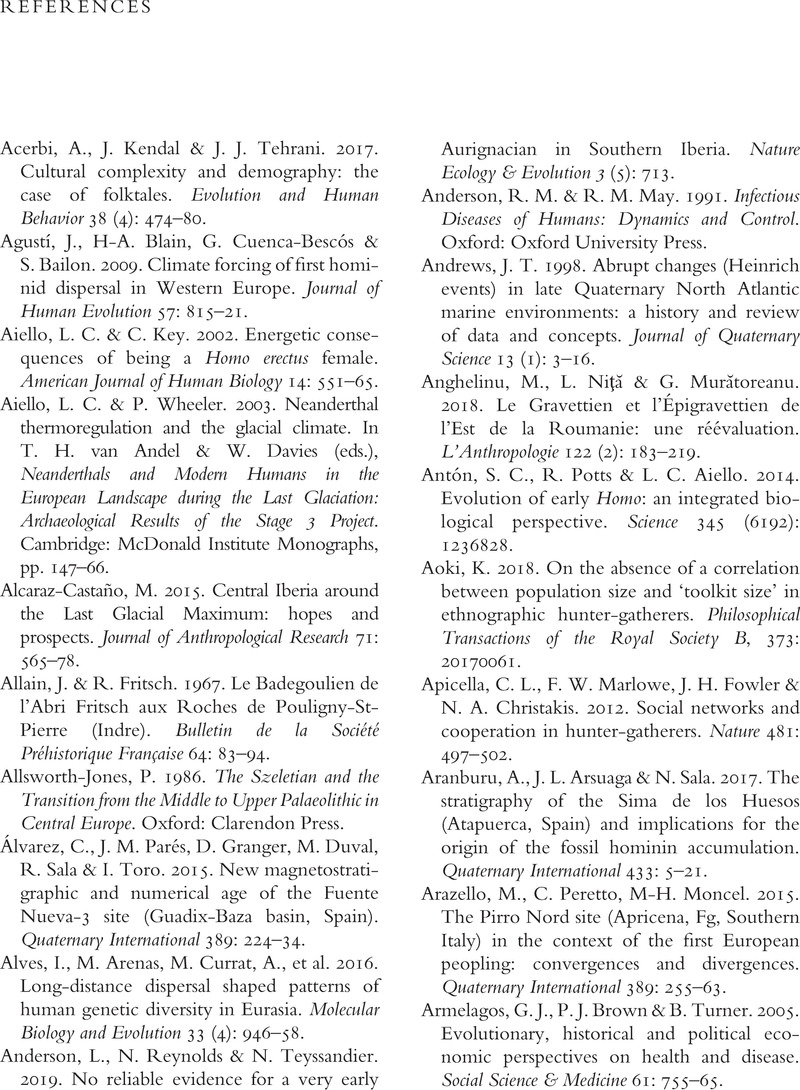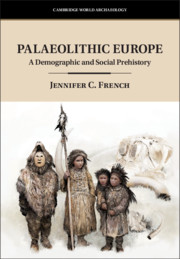Book contents
- Palaeolithic Europe
- Cambridge World Archaeology
- Palaeolithic Europe
- Copyright page
- Dedication
- Contents
- Figures
- Tables
- Text Boxes
- Preface
- Acknowledgements and Permissions
- 1 Towards a Social Palaeodemography of Early Prehistory
- 2 Stones, Bones, and Genes: A Palaeodemographic Database
- 3 Hunter-Gatherer Demography
- 4 Visitation: The First European Populations (~1.8 million–300,000 years ago)
- 5 Residency: The Neanderthals and Their Neighbours (~300,000–40,000 years ago)
- 6 Expansion: The Arrival of Homo sapiens in Europe and the Extinction of the Neanderthals (~50,000–35,000 years ago)
- 7 Intensification: Mid-to-Late Upper Palaeolithic Population Dynamics (~35,000–15,000 years ago)
- Chapter 8 Palaeolithic Europe: Demography and Society
- Glossary
- References
- Index
- References
References
Published online by Cambridge University Press: 27 October 2021
- Palaeolithic Europe
- Cambridge World Archaeology
- Palaeolithic Europe
- Copyright page
- Dedication
- Contents
- Figures
- Tables
- Text Boxes
- Preface
- Acknowledgements and Permissions
- 1 Towards a Social Palaeodemography of Early Prehistory
- 2 Stones, Bones, and Genes: A Palaeodemographic Database
- 3 Hunter-Gatherer Demography
- 4 Visitation: The First European Populations (~1.8 million–300,000 years ago)
- 5 Residency: The Neanderthals and Their Neighbours (~300,000–40,000 years ago)
- 6 Expansion: The Arrival of Homo sapiens in Europe and the Extinction of the Neanderthals (~50,000–35,000 years ago)
- 7 Intensification: Mid-to-Late Upper Palaeolithic Population Dynamics (~35,000–15,000 years ago)
- Chapter 8 Palaeolithic Europe: Demography and Society
- Glossary
- References
- Index
- References
Summary

- Type
- Chapter
- Information
- Palaeolithic EuropeA Demographic and Social Prehistory, pp. 275 - 326Publisher: Cambridge University PressPrint publication year: 2021



